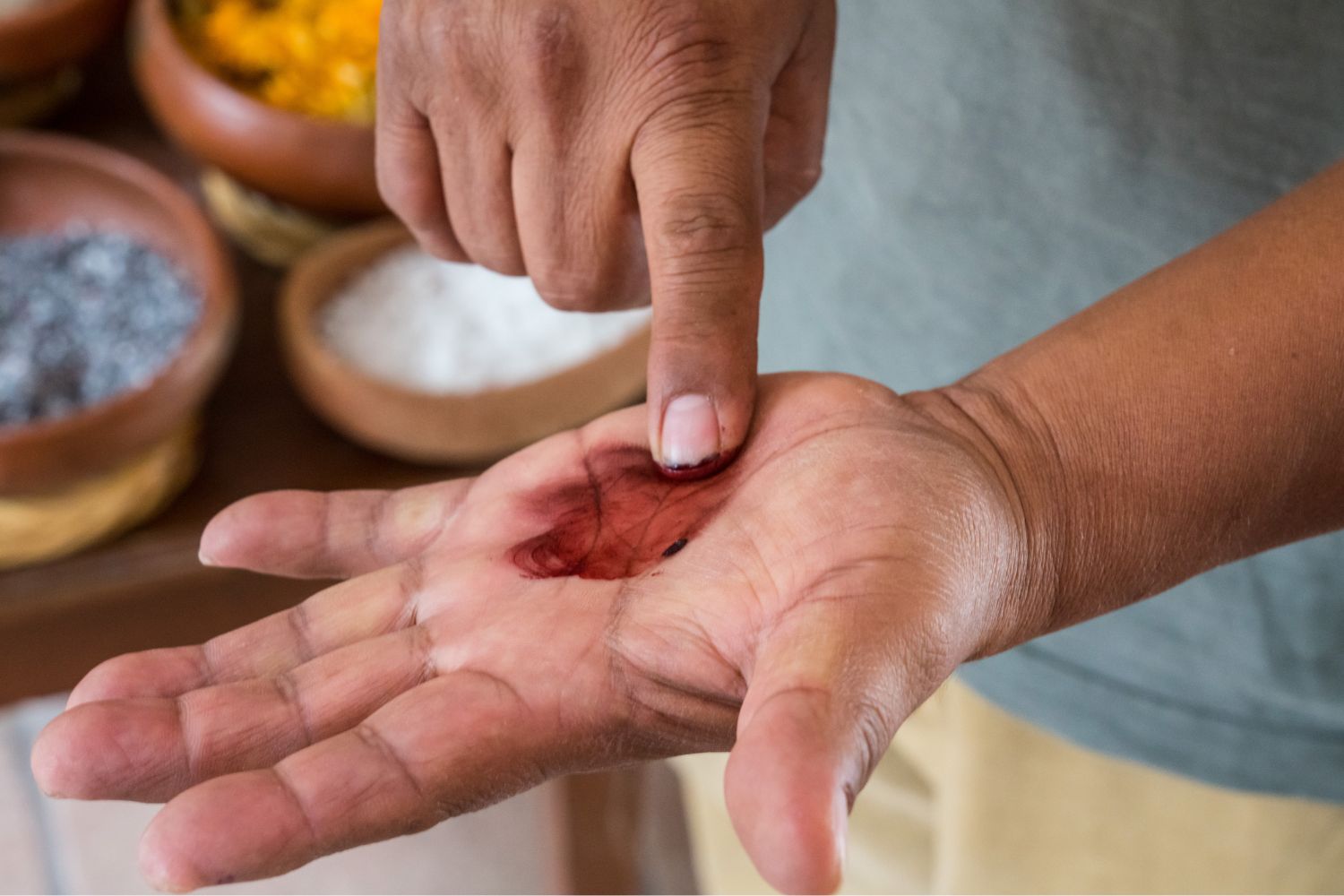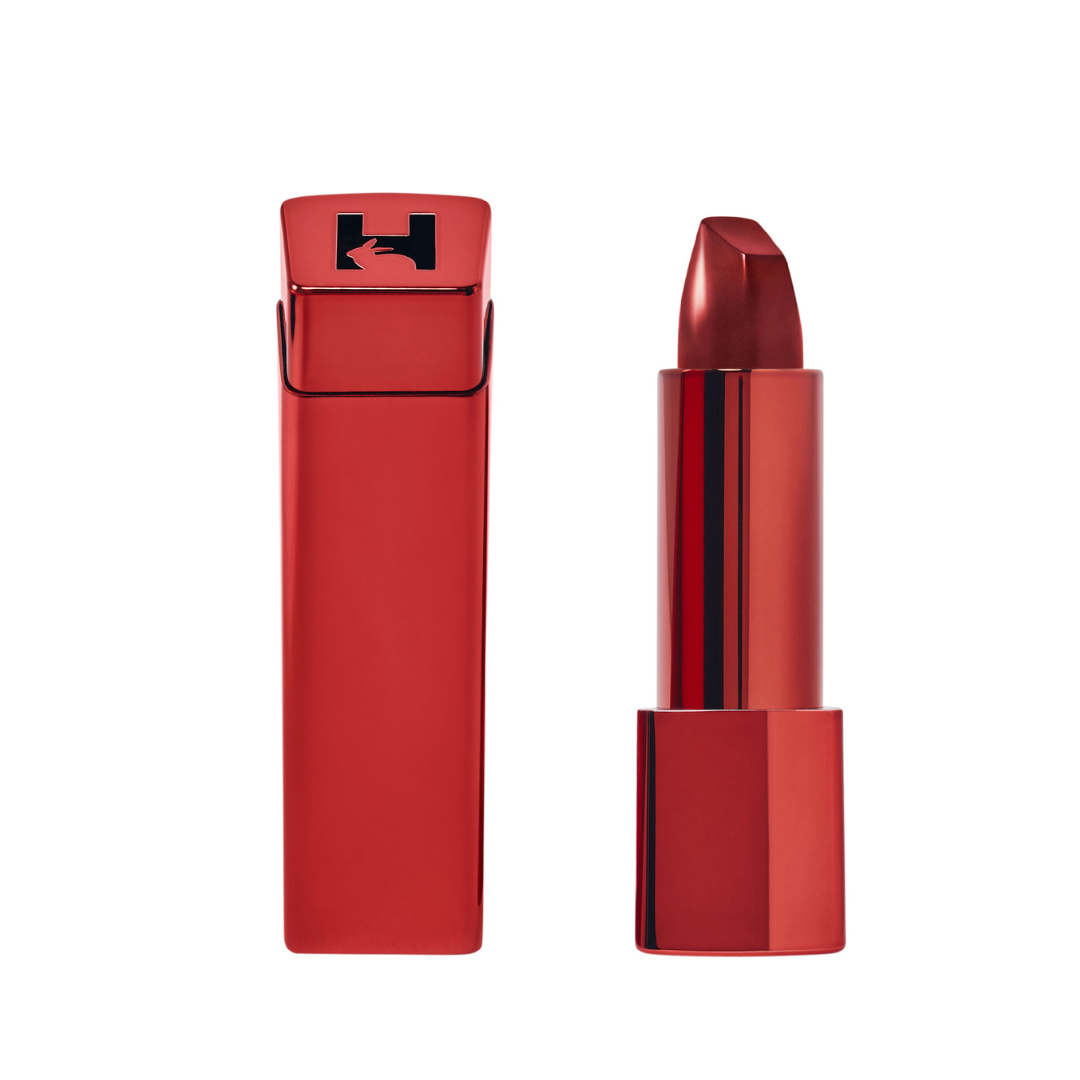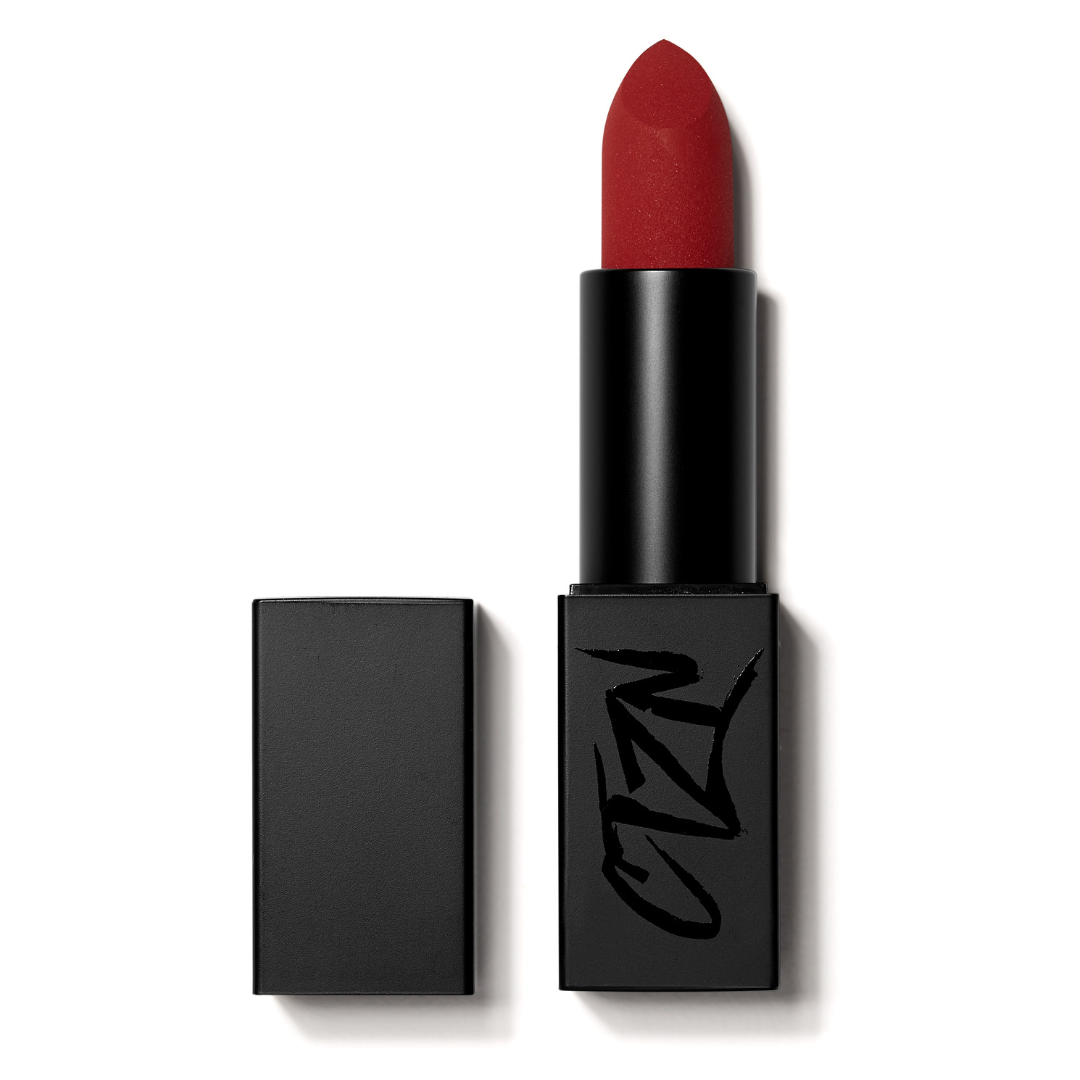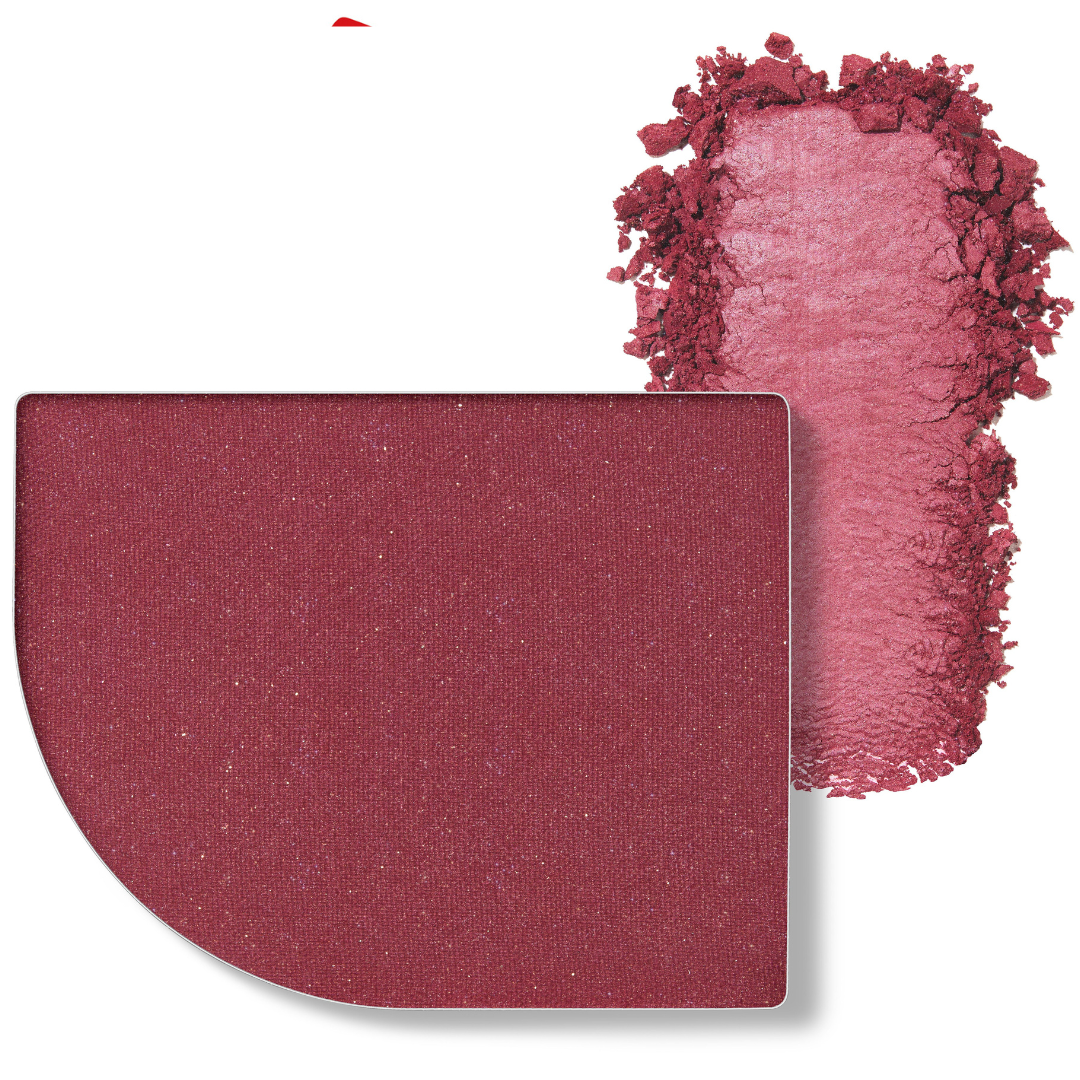In The Loop: Uncovering carmine - how a bug-derived dye colours the world of beauty
Discover the vibrant, yet ethically debated source of carmine—crafted from insects


Let's talk about carmine - aka the red pigment that makes up the hue in most of our lipsticks. This punchy red dye comes from, believe it or not, female cochineal insects (oval shaped, flat-bodied bugs) that can be found living on cacti in the Americas. Yes, you heard that right – these tiny insects are harvested, dried, and then crushed to extract carminic acid, which is the magic behind that vibrant red colour we see in so many of our make-up products.
Carmine has been a big deal in the beauty world for centuries because of that gorgeous red hue it provides. It's used in everything from your favourite lipstick to that blush that makes you look like you've just been kissed by the sun. And it's all-natural, which in theory sounds great, but that’s not the whole story. Not everyone is happy with the idea of the use of bugs to create their make-up products, leading to some pretty heated discussions on the ethics of it all. Plus, with more of us leaning into vegan and cruelty-free lifestyles, the pressure's on for beauty brands to find alternatives that don't involve our insect friends.
The good news is that awareness is on the rise and many beauty brands are stepping up their game, hunting down cruelty-free and vegan options. So, next time you swipe on that red lipstick, just think about the journey it's been on to get to you.

Why is carmine used in the beauty industry?
Let's take a closer look into why the beauty world is totally obsessed with carmine. This stuff is the game changer and the beauty industry utilises carmine due to its durability and the intensity of the red colour it imparts, ranging from orange-red to deep purple-red, depending on the formulation and the pH of the product it is added to. Carmine is the ingredient that helps you achieve those perfect rosy cheeks and eye-popping looks like no other. Plus, it plays well with other pigments, so brands can get really creative with their colour palettes. Carmine is also used in nail polishes for rich colour payoff, as well as foundations and powders too, where the undertones are tweaked to give you that warm, just-got-back-from-holiday glow.
However, it has been reported that nearly 70,000 female insects are used to create one pound of the crimson dye. Carisa Janes, Founder and CEO of Hourglass Cosmetics, says on the launch of her Unlocked lipstick collection: “Carmine is everywhere, from food and alcohol to paint, medication and lipstick. Creating a vegan alternative felt like an impossible feat at times, but it was such an important step.”
How to identify if make-up products contain carmine?
The use of carmine in cosmetics is appreciated for its vibrant colour and natural origin, however, it has also prompted discussions around transparency and ethical considerations, given that it is derived from insects. As a result, there is a growing demand for labelling that clearly indicates its presence for the benefit of vegan and vegetarian consumers, as well as those with allergies or ethical concerns regarding animal-derived ingredients. In response, some brands are exploring synthetic or plant-based alternatives to cater to this consumer base.
To identify if a make-up product contains carmine, you can check the product's ingredient list. Carmine can be listed under various names, including Carmine, Cochineal Extract, Crimson Lake, Natural Red 4, C.I. 75470, and E120. It is commonly found in products such as lipsticks, lip glosses, lip balms, eye shadows, blushes, and nail polishes.
Celebrity news, beauty, fashion advice, and fascinating features, delivered straight to your inbox!
Which make-up brands and products do not contain carmine?
If you're on the lookout for some carmine-free make-up options (because, you know, bugs in your blush might not be your thing), you're in luck. There are tonnes of brands out there that have swapped out carmine for some pretty cool alternatives. We're talking plant-based goodies and synthetic dyes that still give you those vibrant colours without the bug factor.
"We know that vegan ingredients perform just as effectively as those derived from animals," says Susie Ma, founder and CEO of Tropic Skincare. "That's why we choose to use plant-powered alternatives, like beetroot-derived pigment, to provide the rich colour in our lipsticks and blushers. Animal-derived ingredients tend to go through an intense cleansing process to remove bacteria, while vegan ones go through a much simpler refinement process."
So, if you're all about keeping your beauty routine on the eco-friendly and bug-free side, these are the brands you'll want to check out:
Carmine-free beauty products

Hourglass has totally nailed it with their first ever 100% vegan true red lipstick Confession Red 0. It is carmine-free and refillable, so you can swap in any shade from their Confession line. This vegan and cruelty-free lipstick is part of Unlocked, a collection supporting the Nonhuman Rights Project’s mission to unlock the cages of wild animals in captivity. Hourglass will donate 5% of profits from all Unlocked products to the organisation’s efforts to secure fundamental rights for animals.

bareMinerals is a big no-no when it comes to animal testing. While not everything they whip up is vegan, they've got some gems that are, like this lipstick that’s free from any animal ingredients or by-products. No honey, beeswax, silk, or carmine in sight. This moisturising lipstick gives full-coverage, smoothing hydration in one swipe.

This brand recognises the concerns surrounding the use of carmine and offers a more ethical alternative with their Code Red lipstick collection. Even with being carmine-free there is a strong colour pay-off which is long-lasting and has nourishing shea butter and raspberry leaf extract. Plus, it doesn't bleed.

Good colour payoff and a sheeny finish, this powder is formulated with nourishing cottonseed oil and coconut amino acids, so you’ll never have to worry about your makeup looking patchy. As the blush is made to go in a refillable Colour Palette it comes in low-key card packaging.
Lisa Oxenham is a trailblazing beauty editor, journalist, stylist, and creative director with over 20 years of transformative impact in the beauty industry. As the Beauty and Style Director at Marie Claire UK, she orchestrates high-profile shoots with celebrities and influencers, creating visually stunning and globally resonant content.
A passionate advocate for sustainability, Lisa serves on the Advisory Board for the British Beauty Council's Sustainable Beauty Coalition and the Media Advisory Board. She is also an ambassador for the Soil Association certification and the Amazon Research Institute. Through her "In The Loop" column, she keeps readers informed about the latest advancements in sustainable beauty and supports brands that champion environmental causes, emphasising the need for the beauty industry to reset its priorities.
Lisa's influence extends beyond words; she directs inspiring short films on sustainability and challenges in the beauty industry and is a sought-after public speaker. Recently recognised in the Who’s Who in Natural Beauty 2023, she also champions mental health and eco-conscious practices, demonstrating that glamour and environmental responsibility can coexist beautifully.
